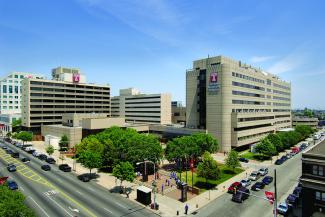Bronchoscopic Procedures, or bronchoscopies, allow doctors to see inside the lungs of patients. They are usually performed in order to determine the cause of a problem with the lungs.
During a bronchoscopy, a doctor passes a bronchoscope, a thin, flexible tube mounted with a small light and camera, through the nose or mouth of the patient and into the airways of the lungs. Using the light and the camera, the doctor can both see the airways and take pictures.
A navigational bronchoscopy uses a special bronchoscope to examine and treat lesions in areas of the lungs that are inaccessible using a regular bronchoscope. Navigational bronchoscopy combines electromagnetic navigation with real-time computed tomography (CT) images to create a three-dimensional map of the lungs. Doctors are then able to use this map to guide the navigational bronchoscope, which includes an extended working channel and guide wire, to difficult-to-access areas of the lungs to take a biopsy or help guide radiation therapy directly to a hard-to-reach lesion.
Endobronchial ultrasound (EBUS) is a procedure that uses ultrasound technology in combination with bronchoscopy to visualize the walls of the airways and surrounding structures. EBUS allows doctors to locate hard-to-reach tumors and small cell lung cancer. EBUS can also be used to take a biopsy from tissue in the lungs or from the surrounding lymph nodes in the chest.
Ready for an Appointment?
Find a doctor near you, request an appointment, or call 800-TEMPLE-MED (800-836-7536) today.
